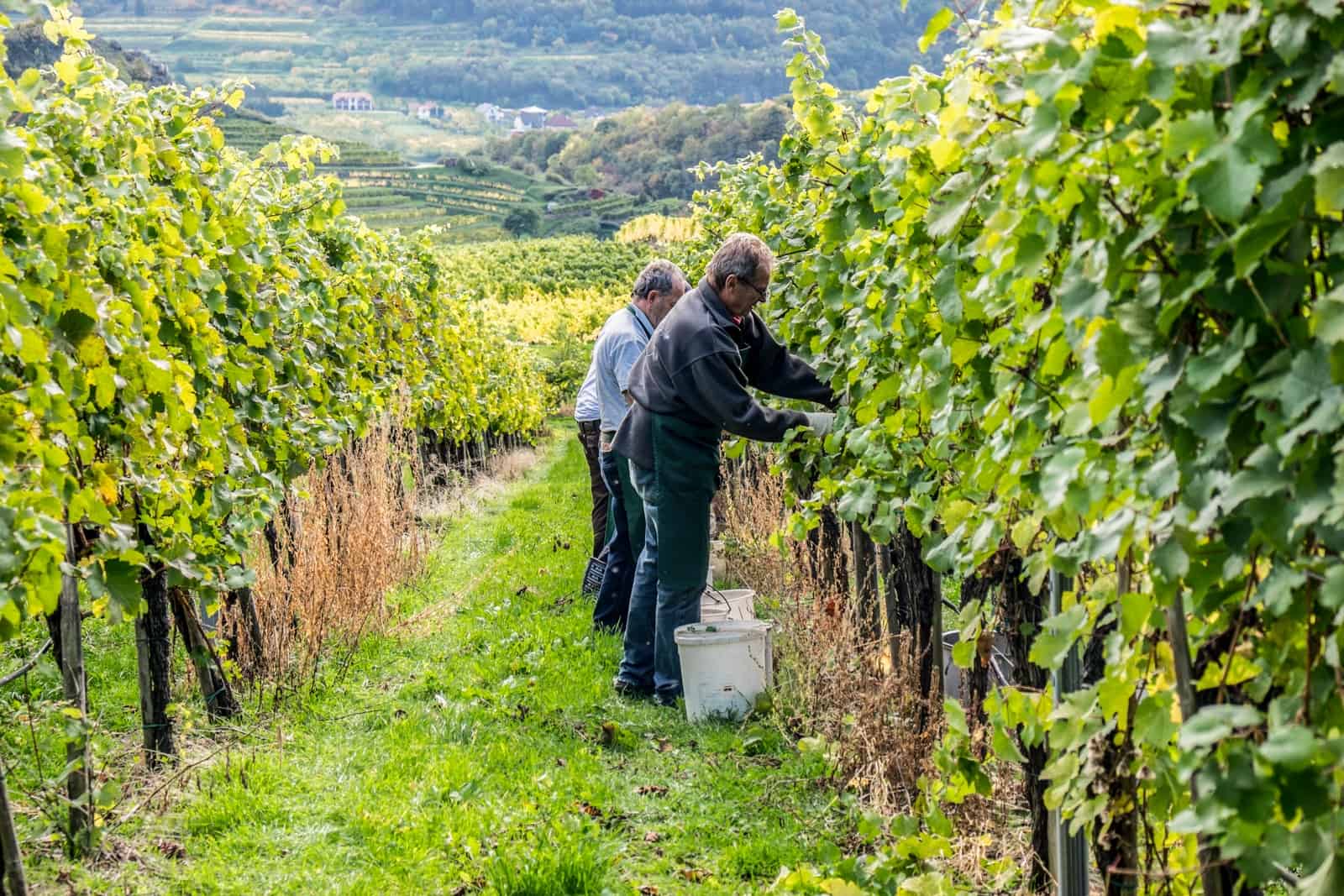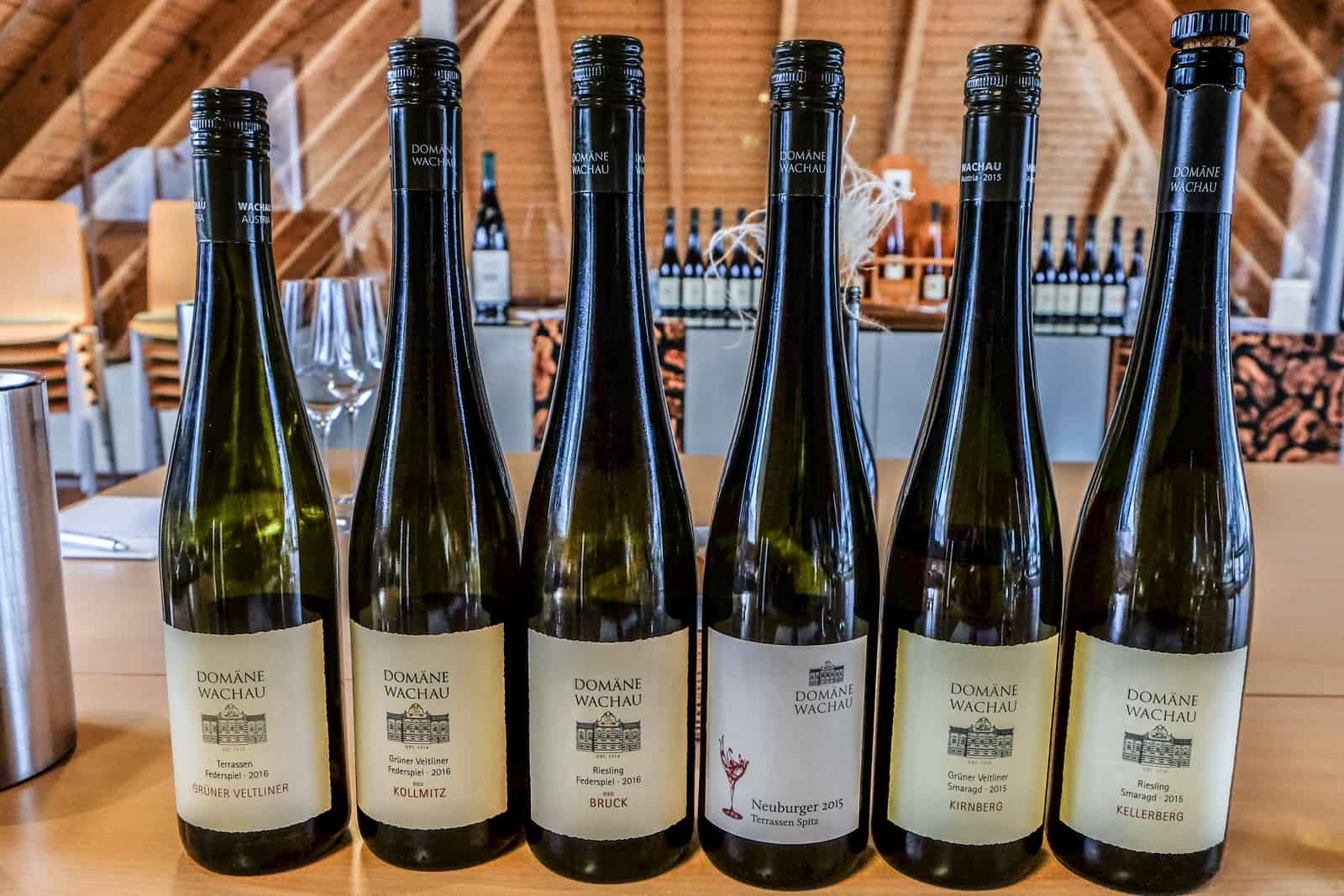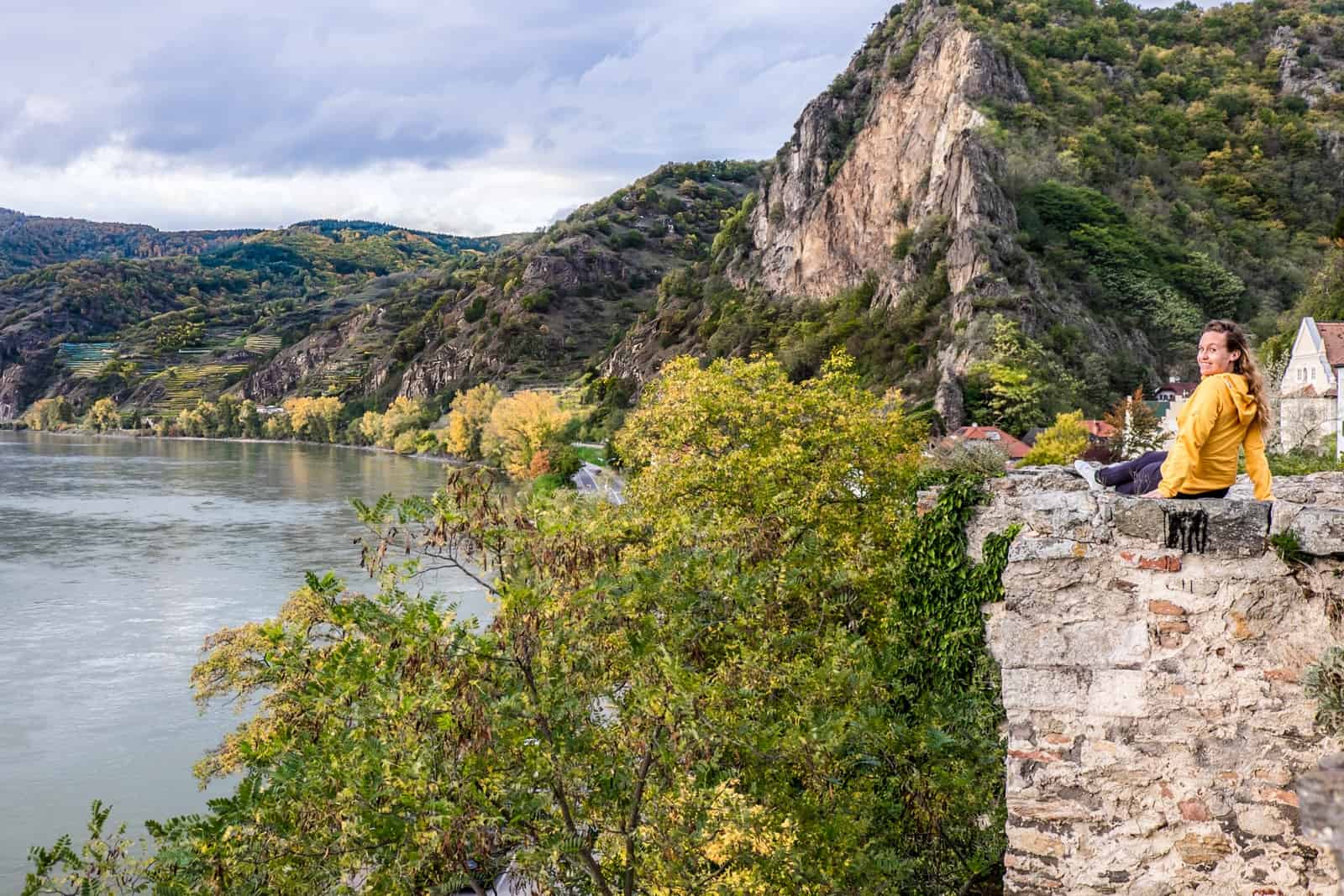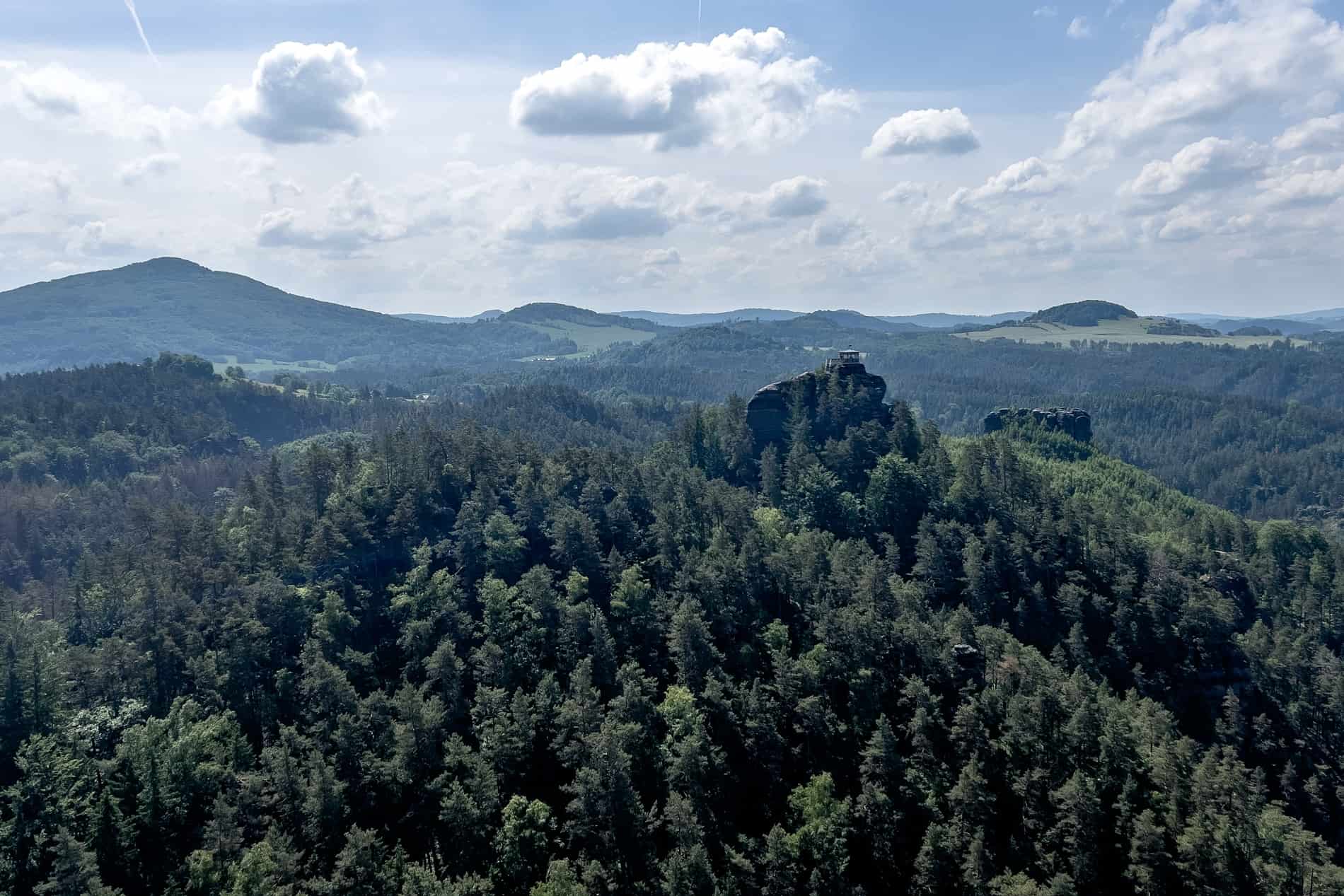The post The Wachau Valley, Austria: Stories from the Towering Stone Wall Vineyards appeared first on Borders Of Adventure.
Visiting the Wachau Valley Austria? From the UNESCO World Heritage Walking Trail to biking the Danube Cycle Path, wine underlines the journey.
As the Danube River curves east towards Vienna, it weaves through a collection of enchanting hamlets, timeworn fortresses and perfectly stacked vineyards of the Wachau Valley in Austria.
The steeply terraced landscapes of ancient, hand-made stone walls are the laid tracks of the short 15km stretch of meticulously manicured, towering vineyards that have come to define one of Europe’s most beautiful and world-renowned wine landscapes.
A UNESCO World Heritage Site since 2000, the Wachau region in Lower Austria is as culturally rich with its scattering of old medieval towns as it is a pristine nature haven of hiking and biking trails through a uniquely preserved landscape. All held together within a region that tells its centuries-old stories through wine – a trip to the Wachau Valley is not complete without sampling the famous Grüner Veltliner and Riesling varieties from the very vineyards you pass through on your exploration.
However you choose to explore the Wachau, it’s without a doubt it will combine something active, with something indulgent. Here are a few ideas to get you started.

The Wachau Valley, Austria: Stories from the Towering Stone Wall Vineyards
Joining a Grape Harvest in the Wachau Wine Region
There was a six-month stretch between my two trips to the Wachau Valley. My first in April meant wandering through sleeping vineyards, not yet ready for harvest. By October, I was standing right in the heart of the early stages of internationally revered wine production.
Within the bundles of red, green, yellow and orange that spread like waves over the vine verandas, I spent a morning helping out at a grape harvest, picking grapes in the sunshine with the family-run Laglers vineyard in Spitz.

Helping at a grape harvest in the Wachau Valley

Karl Lagler, owner of Lagners Vineyard in Spitz

Wachau Valley vineyard harvesting
Spitz began life in the medieval period and remains an essential site of the Wachau, yet old legend brings it back to wine. The Tausendeimerberg Mountain is given its name from the days when the area would produce 1000 buckets of wine in the years of a good grape harvest.
Now the area flourishes with 150-metre climbs of vines, giving it the reputation as one of the best wine-producing villages in Austria.

The terraced vineyards in Spitz – one of the best wine-producing villages in Austria
The history of Wachau Valley winemaking is an ‘artwork in stone walls’, a tradition from over 1000 years that holds these vine balconies in place to maximise the land for wine production. The Romans first brought the cultivation of wine to the Wachau – a practice later continued by the monks who further studied the terroir and constructed the cellars, wine houses and the thousands of kilometres of dry stone walls preserved meticulously today.

The famous stone walls of the Wachau Valley that hold the vine balconies in place for optimal wine production

Terrace upon terrace
The unique climatic conditions of the area, combined with the geological formation of fertile soils (part of an old eroded mountain range that left millions of years old rock) have come to produce the world-class white wines of today. The stone layers preserve the shallow soil on high vineyards and deeper soil on the bottom, prevent erosion, disperse the water, store warmth and house all manner of flora and fauna essential to the preservation of vineyards.

Grape pickers at work in the Wachau
Anyone can join a grape harvest in the Wachau for a day, a week or a longer stretch of the season, helping out local producers. You’ll you armed with boots, an apron and a pair of cutters, and find it both therapeutic to lose yourself in nature and the small family feel of teamwork. It was also a more in-depth insight into the hard work that goes into the manual production of the wine, a lesson in what constitutes a good grape and thus how to pick and sort accordingly.
While I am better at drinking Austrian wine, I felt as if I had contributed a little to the Austrian wine production of 2017, with a grape harvest filling another space on the new experiences list.

Grapevines

Trying my hand at grape picking. It’s harder than it looks.
Hiking The Wachau World Heritage Trail
Did you know that the Wachau Valley is a UNESCO World Heritage landscape?
Six months before the foraging of ripe grapes in Spitz, I was in Krems hiking one of the routes of The Wachau World Heritage Trail to Dürnstein. It was Spring, and while the colours may have been more muted, I spent a few beautiful hours hiking one of the 14 trails that connects the wine valley basins with historical towns, old abbeys, castles and tiny villages.

On the Wachau World Heritage Trail to Dürnstein
With the four-hour trail almost to myself, I was the master of all vineyards I surveyed, which were yet to break into full bloom. If you are lucky, this is the time of year when you’ll see the Apricot trees just starting to blossom. Apricot trees are as much of a noteworthy feature of the region with Wachauer Marille jams just as famed as its wine. The Wachau Apricot can be found on menus everywhere in the form of juices, cakes and chutneys, especially in July and August.

The vines on the Wachau World Heritage Trail
The Wachau is where swaths of forest have been transformed to terraced vineyards. The curving pathways weave through and around the hilly mounds covered in the lattice of stone walls that piece this region together, intersected by patches of serene woodland, which I wandered in blissful hours of disconnect in high altitudes, looking down onto the Danube.

Views from the Wachau World Heritage Trail

One of the Wachau Valley hiking viewing platforms

Cellar door within a stacked-stone wall
Nature embraces you and artistic sculptures greet you along the World Heritage Walking Trail, known as one of “Austria’s most scenic long-distance hiking routes”. Along the way are ‘Wine Sculptures’ by local artist Fritz Gall, depicting one of the primary industries and attractions of the region. I found them on the edges of vineyards, dotted along part of the walking path – an indicator of your arrival in Dürnstein where more wine awaits.

One of the many art sculptures on The Wachau World Heritage Trail

Wachau World Heritage Trail art and views

Art sculpture on The Wachau World Heritage Trail

Wachau Valley walks
Wachau Valley Wine Tour and Tasting
Hiking towards Dürnstein on The World Heritage Trail means journeying towards the reward of wine tasting, and a visit to the elite Domäne Wachau winery is a must.

Domäne Wachau winery Grüner Veltiner vines
Considered to be one of the top producers in the region and the only winery to own vineyards in every renowned single vineyard, it’s here that you can set your taste buds on the best Grüner Veltliners and Rieslings. You also get to tour the old and new wine cellars and the exquisite Cellar Palace, that still stands proudly on the Baroque front lawn.

Domäne Wachau aged wine barrels

Dusty wine bottles in a cool, stone cellar

Part of the Domäne Wachau winery estate

Inside the Domäne Wachau winery Cellar Palace
Wine tasting here in this slick and modern complex, five minutes from the centre of Dürnstein village, happens five to six days a week, all year-round. Experts explain the variety and spectrum of wines produced in the Wachau as a result of varying winds and temperature changes, altitudes and positioning to the Danube. Because of the unique climate conditions, mixed with the topography, harvest occurs late to extend the hang time as long as possible to achieve the perfect, most ripe grape from each plot of land.

Wine tasting at the Domäne Wachau winery

Domäne Wachau shop
Today, there exists three categories of wine in the Wachau: Steinfeder (the lightest of the varieties with maximum 11.5% alcohol volume), Federspiel (wines defined as having more vitality and character, typically with delicate aroma components) and Smaragd (the highest quality category of wines, usually those harvested late from the best vineyard sites).

A selection of six wines at the Domäne Wachau tasting session
The question is – how many bottled of wine can you carry home, or continue hiking with as extra weight in your bag?
Danube Cycle Path Through the Wachau
Another way of travelling these wine lands is on two wheels. Some of the 1,200 kilometres of The Danube Bike Path passes through the Wachau Valley on its scenic route, parallel to the hike trails. Split into two – a north side and south side riverbank trail on which to cycle – it is the north side of the Danube that takes you through the famous medieval villages like Spitz and Dürnstein.
I biked from Spitz to Dürnstein and back to Krems, where I would then catch the short train ride back to Vienna. The Danube Cycle Trail can be covered in six stages, north and south of the Danube, with 41 cycle tours designed for those who want to branch off from the main route and explore the wider region.
The Wachau section is known as the Danube Cycle Path – Stage 5 and runs between Emmersdorf and Krems for nearly 35 kilometres. The Danube Cycle path from the city of Linz gets you to the famous Schlögener Schlinge loop of the Danube River.

Danube Bike Path through the Wachau Valley

Biking the Danube Cycle Trail in the Wachau Valley, Austria
Biking the Danube Cycle Trail route means not only passing through endless rows of manicured, tranquil vineyards but being rewarded by the best views and rest stops along the mighty Danube river.
Spitz to Dürnstein
On the two-hour journey from Spitz to Dürnstein, a bike tour was an adventurous way to explore the Wachau Valley’s many towns and villages. However, it’s worth stopping for an extended break in Dürnstein. I indulged in an afternoon tea at the Schlossberg Hotel that sits on the rocky peak, overlooking the Danube.

Wachau Valley next to the Danube River

Afternoon tea at the Schlossberg Hotel in Durnstei

Schlossberg Hotel Durnstein overlooking the Danube
If you are not too distracted with wine temptation, Dürnstein is a cultural exploration spot amongst the grapevines. You can clamber for 30 minutes up to The Ruins of Dürnstein Castle where the Kuenringer family held Richard the Lionheart captive in the winter of 1192.

The Ruins of Dürnstein Castle on the hilltop

Hike up to The Ruins of Dürnstein Castle as part of your Wachau exploration
You can also wander the romantic, cobbled streets and bustling squares of the Medieval and baroque village that is defined by the Church with the pale blue tower (Abbey of the Augustinian Canons).

Blue church spire in Dürnstein

Street leading down to the Danube River in Dürnstein

Pastel-perfect Medieval Dürnstein, Austria

The Medieval and Baroque village streets of Dürnstein
Dürnstein to Krems
It took around the same two-hour time to get from Dürnstein to Krems, a 1,000-year-old wine town with merchants houses and a historical quarter of narrow lanes.
In the fashion of the region, Krems is the only town in Austria to be accepted into the “cittá del vito” guild of famous European wine towns – an apt way to start or end your time in the Wachau Valley.

A far view to the city of Krems from the Wachau vineyards

Cycling through Krems
Things to Know About Visiting the Wachau Valley, Austria
Getting to the Wachau Valley from Vienna
Many explore the Wachau as a day trip from Vienna, with the easiest starting and ending point being Krems an der Donau. The average journey time by train between Vienna (Wien Bahnhof) and Krems an der Donau (Krems/Donau Bahnhof) is no more than 1 hour and 30 minutes on the ÖBB rail service. The fastest train takes around 1 hour and 12 minutes.
By car, it takes one hour 55 via the A22 and S5 roads.
Wachau from Krems and Melk
Others choose to start in Melk, around a one-hour train from Vienna, to wind through the valley from nearby Emmersdorf and leave from Krems. Alternatively, you can take a scenic river cruise from Krems to Melk, passing through the Wachau landscapes.
Grape Harvesting in the Wachau
There are packages you can book for the grape harvest experience, including accommodation, wine tasting, sightseeing and bike hire, alongside the time helping out at the grape harvest. The Lower Austria tourism website outlines such offers.
Wine Tasting
The Domäne Wachau Discovery Tours take place five to six days a week, all year-round: April to October on Monday-Saturday; November to March on Monday to Friday. One of the experts from Domäne Wachau will be on hand to give you a hearty introduction to the wines and a back-to-basics overview, following the cellar and vineyard tour.
Wachau Bike Tours
‘Next Bike’ is an online bike rental system in the Wachau where you can pick up and return bikes at any of the 40 rental/drop-off stations.
Combining wine tasting and biking on this full-day Wachau Valley winery bike tour from Vienna, which includes a visit to Domäne Wachau and the chance to hike the Dürnstein castle ruins.
Want to Visit the Wachau Region? Pin It!

My trips to the Wachau Valley were a part of my ‘Year in Austria’ project, as the UK ambassador for the Austrian National Tourist Office. I visited various destinations across the country (from my home base of Vienna) over 12 months, showcasing a variety of regions and activities. Follow #YearInAustria for all the stories through the seasons.
All stories are my own opinion.
The post The Wachau Valley, Austria: Stories from the Towering Stone Wall Vineyards appeared first on Borders Of Adventure.














